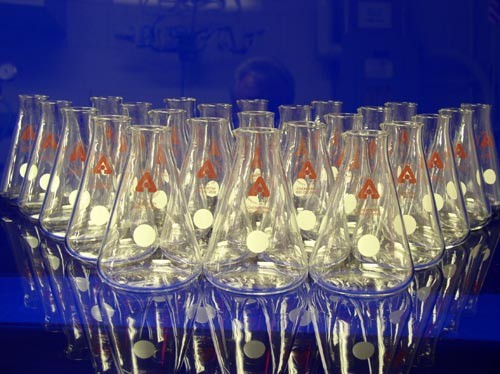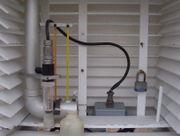- Air Homepage
- Weather Equipment
- School Science Supplies
School Science Supplies
Search for more about science and kids.
Need school science supplies for your child's science project? You can find science supplies at your local store. They have a lot of supplies and materials for experiments, projects, and midterms. They might also give you tips on how to use the materials.
It's a great way to introduce and get kids interested in science while instilling a love for it.
Microscopes, dissecting instruments, weather monitoring equipment, monitoring equipment, and fun stuff like aircraft simulation models are all important. School science supplies are just as easy to find as home office supplies.
When you buy science equipment from trusted sources, you probably won't have to do an equipment material test. The way science works is by observation and experimenting to find answers. On the whole, suppliers know their customers scrutinize carefully.
For kids to learn from nature, science supplies need to address this issue. It's also important to make environmental data resources accessible to kids. They'll feel like they belong to Mother Nature.
Children with such a background are more likely to grow up to be environmentally responsible people. They'll be an asset to their country and the planet.
A little scientific career inspiration
What can I do to help my kid want to continue study in science? You can spark your child's interest in Science, Technology, Engineering and Mathematics (STEM) fields with good school science supplies and equipment:
- You can help your child develop a deeper understanding of scientific concepts and principles by letting them handle science supplies and equipment. Your child will see the relevance of science in their daily lives and find science more engaging and exciting.
- You can let your kid explore and discover the natural world with this equipment. Their curiosity will be piqued and they'll be motivated to learn more.
- Working with science supplies and equipment can encourage your child to think creatively and innovate, which are important skills in the STEM fields. They can develop critical thinking skills and learn to approach problems in new and creative ways by experimenting and testing.
- Your child can explore a wide range of STEM and environmental science careers with high-quality science implements. By doing this, they'll be able to understand the practical applications of science and technology and be inspired to pursue careers in STEM.
Please provide examples of school science supplies
Simple science equipment, like thermometers, barometers, rain gauges, etc., lets kids explore how meteorological people work.
Kids can learn about meteorological instruments here:
- Temperature is measured with a thermometer. There's a glass or plastic tube containing a liquid, like mercury or alcohol, that expands or contracts with temperature. You can teach your kids how to read a thermometer and what temperature means.
- An anemometer measures wind speed. Cups spin in the wind, and the speed of the cups is measured electronically or mechanically. Kids can learn how to use an anemometer to measure wind speed.
- A barometer measures atmospheric pressure. An atmospheric pressure gauge usually has a glass tube filled with mercury or another liquid, and the height of the liquid indicates the pressure. You can teach kids how to use a barometer to measure pressure and understand atmospheric pressure.
- A rain gauge measures how much rain falls. It usually has a funnel that collects rain and a measuring cylinder that measures it. You can teach kids how to use the rain gauge to measure the amount of rain.
- A hygrometer measures humidity. A sensor measures how much moisture is in the air. Kids can learn how to use a hygrometer to measure humidity.
- A weather vane measures wind direction. An arrow or other shape points in the wind's direction. You can teach kids how to use the weather vane to measure wind direction.
These meteorological instruments can help kids learn about weather and the environment. Meteorology can also help them predict and monitor weather patterns.
Many schools have powerful telescopes that let students see things the naked eye can't see. Using a microscope, they can look at tiny living things up close and see how they work.
School science projects require plenty of equipment, if you know where to look. Finding the right science teachers, equipment and ideas will help the child make a great presentation.
Kids won't necessarily become Einsteins or Darwins if they have access to school science projects and supplies, but it's a good way to encourage them to uncover the mysteries of nature. It's a little science odyssey of their own.
It's important to use science supplies right. They're supposed to be used correctly and taken care of. Report any misuse or damage to the teacher right away.
Science supplies can cause serious injury or even death if misused (or worse if you recognize THIS teacher.) Follow the directions provided with each science supply and use the right safety gear to avoid getting hurt.
What was your science project?
Got a great science project idea? Maybe you enjoyed one of these or found a successful one you enjoyed. Did it work? Was it something to do with weather?
Maybe you screwed it up like I did...and can laugh about it now. I'd like to help.
Was it fun? What grade were you (or your child) in? We'd all like to hear about it. That way you can re-live the memory.
Here are some examples
See contributions from other visitors to this page...
Classic Volcano Experiment 




I had made a volcano using some clay material. Inside that mountain I had fixed a bottle. Then for the color of lava I had put some red color in it which …
Which Fluoride Rinse Protects The Best? 




I judged a science fair for 5th graders in 2006. There was a boy who had this project idea, and it was perfectly executed. He measured out a cup each of …
Stains Not rated yet
My project was very boring, we had to do some kind of project that went a long with a work sheet, demonstrating the scientific method. I was very unoriginal …
The Pendulum Not rated yet
For my 3rd grade science project I created a pendulum using a ladder and a two-liter soda bottle. The soda bottle was filled with Elmer's glue mixed with …
Kaleidoscope Not rated yet
Well, for my science project I reconstructed a kaleidoscope made up of card board pieces joined together and taped with the mirrors placed inside at the …
Tennis Balls Not rated yet
The science project that I remember most was about tennis balls. My question was whether tennis balls bounce higher when they are hot or cold. I don't …
Water Erosion Not rated yet
I took a large, 30" x 18" translucent plastic tub and formed 2 large hills, one on each end of the box. I planted grass seed on one hill.
Over the …
Search this site for more information now.
Wrapped up in a scientific package.
School science supplies and equipment can help your kid develop an interest in STEM fields and a love of science. Help your kid understand the relevance and importance of science and technology by giving them hands-on experience, opportunities for exploration and discovery, and exposure to STEM careers.
If you want to have some more fun with satellite images, try maps.google.com. Go back from School Science Supplies to the
Weather Equipment web page, or go visit the Stuff in the
Air homepage.
Do YOUR children have the necessary school science supplies?
Would you like to give your child a head start? Find out what school science supplies will be helpful to the student.
Have your Say
Looking forward to College? OR have any school, math or science experiences you need to tell the world? Go ahead: Have your Say about it.
You can even comment on the other buzz...no registration or login required.












New! Comments
Do you like what you see here? Please let us know in the box below.